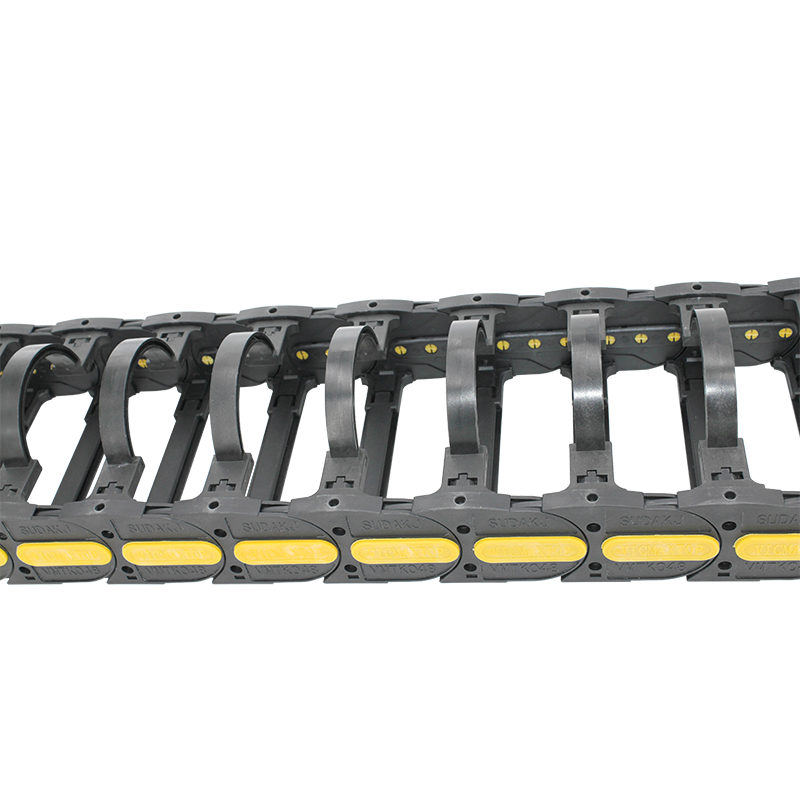magnetic chip conveyor
Magnetic Chip Conveyor Revolutionizing Material Handling in Manufacturing
In the ever-evolving landscape of manufacturing and materials handling, efficiency and precision are paramount. One innovation that has significantly changed the way manufacturers deal with metal chips and other ferrous materials is the magnetic chip conveyor. This device not only enhances operational efficiency but also contributes to a cleaner and safer work environment, making it a valuable asset in various industries.
The Functionality of Magnetic Chip Conveyors
Magnetic chip conveyors are designed to transport metal chips, turnings, and other ferrous materials away from machining processes, such as milling and turning, where metal scrap is generated. These conveyors utilize powerful magnets that create a magnetic field capable of attracting and holding ferrous materials securely. As a result, companies can eliminate the traditional methods of dealing with metal waste, such as manual handling or using less efficient conveyor systems that are not specifically tailored for metal chips.
The basic operation of a magnetic chip conveyor involves the movement of a belt or slider bed, which is equipped with magnetic strips or plates. As the belt moves, it carries the metal chips along its surface, effectively transporting them to a designated collection point or bin. This streamlined process not only saves time but also reduces the risk of injury associated with manual handling of sharp metal scraps.
Advantages of Magnetic Chip Conveyors
1. Efficiency One of the primary benefits of magnetic chip conveyors is their ability to enhance production efficiency. By automating the collection of metal chips, they minimize machine downtime, allowing for smoother operational flows. This can significantly impact overall productivity, allowing manufacturers to focus on core tasks rather than waste management.
magnetic chip conveyor

2. Maintenance Reduction Unlike traditional conveyor systems that may require frequent maintenance due to wear and tear or jams caused by non-ferrous materials, magnetic chip conveyors are designed to handle ferrous materials without much fuss. Their robust construction and effective design reduce the frequency of maintenance checks and associated costs, adding to their economic viability.
3. Improved Workplace Safety Metal chips are often sharp and can pose a serious risk to workers if not properly managed. Magnetic chip conveyors help to mitigate this hazard by automatically removing these hazards from the workplace, significantly lowering the risk of cuts, punctures, or other injuries. A cleaner environment also promotes better overall health and safety practices in the facility.
4. Environmental Considerations The proper management of metal waste is an essential aspect of sustainable manufacturing. Magnetic chip conveyors facilitate the efficient collection and disposal of metal chips, which can often be recycled. By sweeping the chips away from the machining area quickly and effectively, manufacturers can ensure compliance with environmental regulations and reduce their overall environmental footprint.
5. Versatility Magnetic chip conveyors are not limited only to a single type of manufacturing process. They are adaptable to various applications, including CNC machining, lathes, milling machines, and more. Their versatility makes them ideal for a range of industries, from automotive to aerospace, and beyond.
Conclusion
In conclusion, magnetic chip conveyors represent a significant advancement in the field of material handling within the manufacturing sector. By providing an efficient, safe, and economical method of managing metal scraps, these conveyors are transforming operational processes and contributing to a more productive work environment. As manufacturers continue to prioritize efficiency and sustainability, the adoption of magnetic chip conveyors is likely to increase, solidifying their place as an essential component of modern manufacturing. Thus, investing in such technology not only serves immediate operational needs but also long-term strategic goals in a competitive marketplace.








